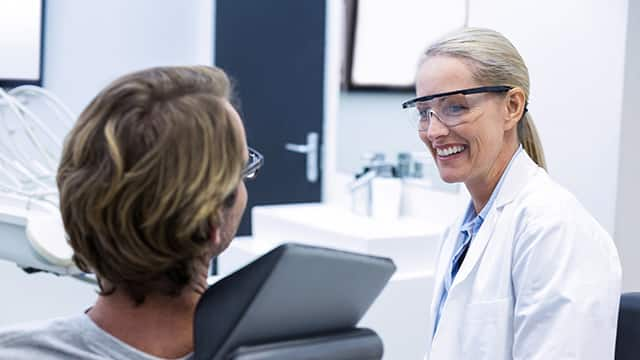Also referred to as eco-dentistry, green dentistry utilizes technology and green procedures to promote environmental sustainability and pollution prevention. Green dentistry focuses on applying technology, repurposing dental supplies, and limiting the use of energy, water, and radiation.
What Is the Advantage of Going Green in Dentistry?
The environment is the biggest winner of eco-dentistry. Conserving resources and using sustainable supplies create less of a burden and produce less waste. Green dentistry can generate cost savings over time, translating to lower treatment prices for patients. It also produces less chemical contamination by limiting heavy metal waste that can enter water sources and damage the local environment.
What Impact Can Dental Practices Have on the Environment?
Dental professionals have used silver fillings, also known as dental amalgam, for over one hundred years. Dental amalgam lasts a long time, hardens quickly, and is generally less expensive than other cavity filling methods. Amalgam fillings contain around 50% mercury and a combination of other metals such as silver, tin, and copper. Mercury is classified as a potent neurotoxin, but it forms a safe, stable material when combined with other metals. When a dental professional adds a new filling, the particles from the amalgam can enter waterways and cause a range of adverse effects on humans and wildlife if not correctly disposed of.
The United States Environmental Protection Agency (EPA) claims that dental clinics are the primary source of mercury discharges to sewage treatment centers. The EPA also considers mercury pollution to be a global concern. As a result, dental offices are required to use low-cost amalgam separators to effectively recycle any toxic materials from the amalgam and prevent mercury from entering the environment.
What Are Some Green Dental Techniques?
The American Dental Association compiled 80 environmentally friendly habits for dental practices to reduce waste and conserve energy. Many of these solutions are inexpensive or free and can even save dental offices money in the long run. They involve categories like "being proactive" and "educating staff and patients." Some of the green policies recommended by the ADA include:
- Implementing an environmentally friendly sterilization program.
- Installing an amalgam separator for fillings.
- Sending appointment reminders on recycled paper or through email or text message.
- Getting rid of aerosol products.
- Purchasing organic or eco-friendly scrubs.
- Putting indoor plants around the office.
Eco-Dentistry vs. Bio-Dentistry
While environmentally friendly practices are at the heart of green dentistry, biological dentistry takes a holistic approach to patient care. As an alternative to traditional dentistry, bio-dentistry focuses on the entire body's wellbeing, not just the mouth. The practice is designed to look beyond symptoms to identify the root cause of both dental and health issues. It supports minimally invasive procedures and encourages the use of biodegradable and reusable supplies. Treatments don't incorporate harsh chemicals, and removing silver amalgam fillings containing mercury is common among biological practitioners.
How Can I Reduce My Dental Care Waste at Home?
If you're interested in applying some eco-dentistry practices to your daily oral care routine, these tips are a great start:
- Try more environmentally friendly oral care materials like toothpaste tablets, bamboo fiber floss, or bamboo toothbrushes.
- Don't run water while brushing.
- Purchase recyclable toothpaste tubes.
- Don't rinse your mouth after brushing your teeth to conserve water.
- Drink from reusable straws.
Green dentistry comprises seemingly small steps that can make a positive impact on the environment. As beneficial as this sustainable mindset is, sometimes the eco-friendly option isn't always best for your oral health, so balancing traditional and bio-dentistry is critical. Ask your dental professional what areas of green dentistry their clinic practices and encourage them to perform a "waste audit" to help determine any adjustments they can make to reduce waste and use sustainable products.
Oral Care Center articles are reviewed by an oral health medical professional. This information is for educational purposes only. This content is not intended to be a substitute for professional medical advice, diagnosis or treatment. Always seek the advice of your dentist, physician or other qualified healthcare provider.
ORAL HEALTH QUIZ
What's behind your smile?
Take our Oral Health assessment to get the most from your oral care routine
ORAL HEALTH QUIZ
What's behind your smile?
Take our Oral Health assessment to get the most from your oral care routine
Join Us
Get the best of your oral health routine and take it to the next level with expert advice, recommendations, products and solutions and special offers.
Join Us
Get the best of your oral health routine and take it to the next level with expert advice, recommendations, products and solutions and special offers.












.png)


